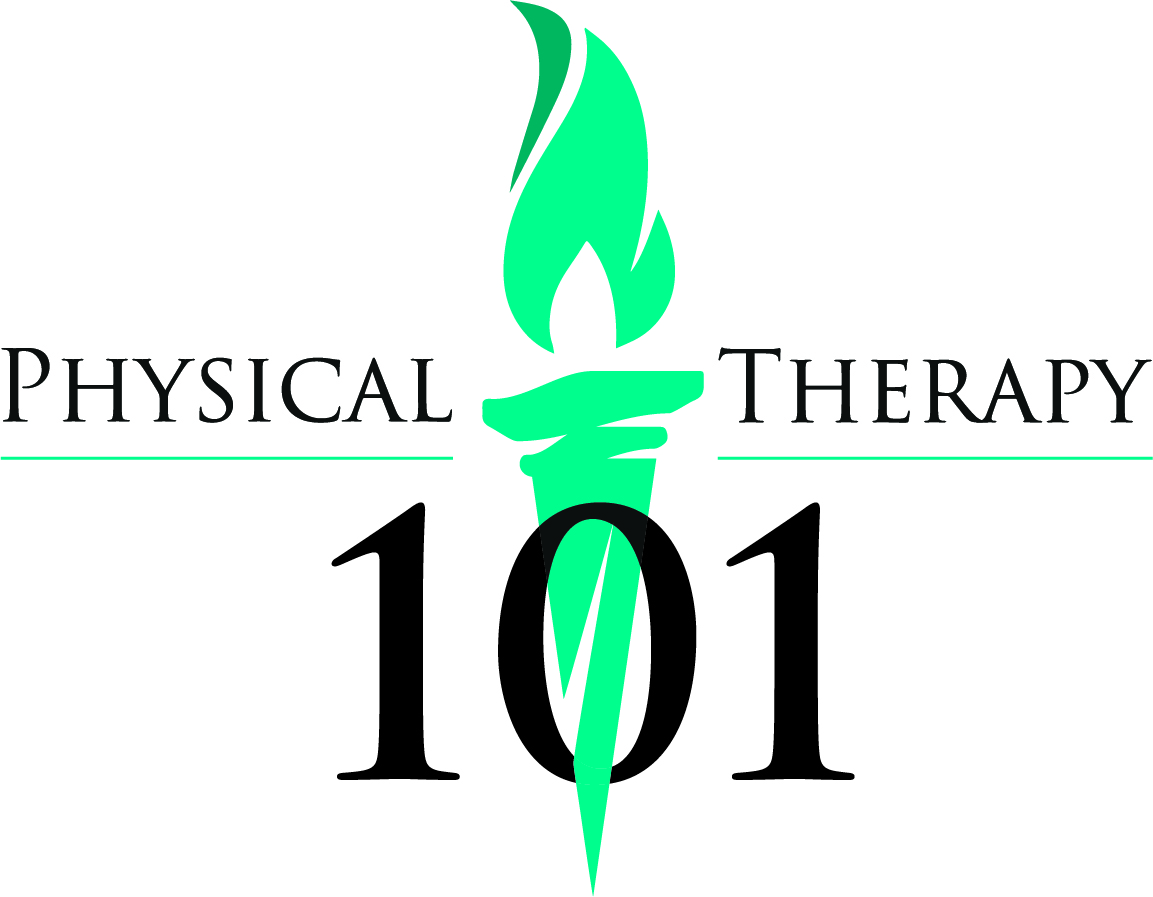Background
Adhesive Capsulitis or more commonly referred to as "Frozen Shoulder," is a condition caused by thickening of the shoulder capsule. This results in the creation of adhesions causing pain and stiffness in the shoulder. Frozen Shoulder occurs in patients between 40 and 60 years of age. Risk factors for Frozen Shoulder has been correlated with shoulder trauma, extended immobilization, and shoulder surgery. Frozen Shoulder is associated with several medical conditions, with the most significant being insulin dependent diabetes.
There are three stages associated with Frozen Shoulder. The first stage last for 3-6 months and is known as the "Freezing" phase. Pain is characterized as being more severe during night time and with activities. The pain experienced in this phase may be experienced in the lateral arm and below the elbow. At this stage symptoms will usually progress and the patient will experience fewer comfortable arm positions.
The second stage is known as the "Frozen" phase and it can last from 3 to 18 months. A patient can expect activities of daily living to be severely restricted. This is due to the patient having restricted range of motion in all planes. It is common for the patient to feel sharp pains as they reach the end range of the tight shoulder capsule. Due to significant compensatory strategies and nonuse, weakness results in the affected shoulder.
The third and final stage is known as the "Thawing" phase. During this phase the patient can expect their range of motion to return very slowly. The process is usually accelerated with aggressive physical therapy and range of motion exercises.
The entire process of Adhesive Capsulitis can last up to 3 years however with treatment this process can be expedited. According to the American Academy of Orthopedic Surgeons, "More than 90% of patients improve with relatively simple treatments to control pain and restore motion."
The patient will usually present with limitations in range of motion actively and passively. One tell tale sign of Frozen Shoulder is the decreased range of motion of shoulder external rotation with the elbow at the person's side.
Recommended Products
Treatment
Passive range of motion is the best way to treat a frozen shoulder through pulley exercises. This is performed correctly with the non affected arm lifting the affected side. All of these pulley exercises should be held 10-15 seconds and performed 3-4 sets. It is important to perform them 1-2 times per day for maximum results.
Start by taking your pulleys and hanging them to the top of the door, then shut the door to keep them in place.
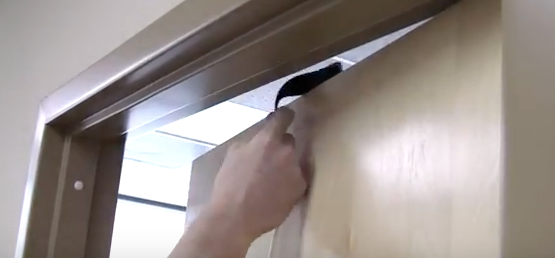
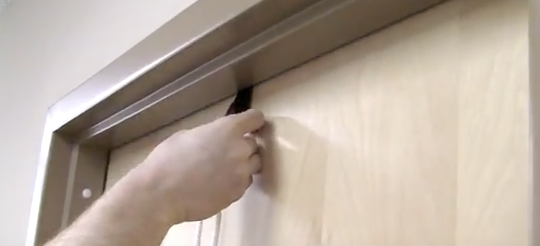
If your motion is severely limited start by turning your chair to face the door. Then, pull down with the non-affected arm. This is helping the shoulder improve the range of motion known as Flexion.
Flexion
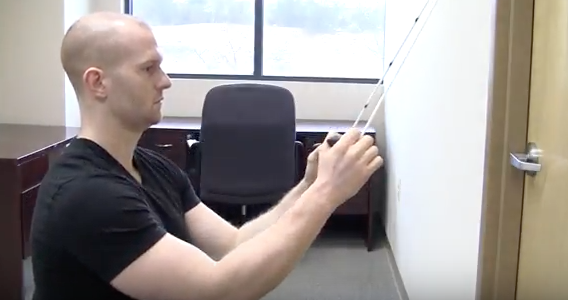
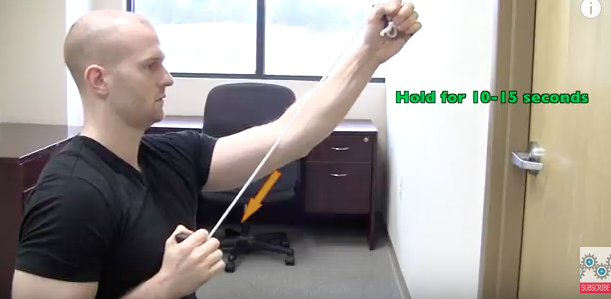
Turn your chair to the side to work on your shoulder's lateral motion. This motion is known as Abduction.
Abduction
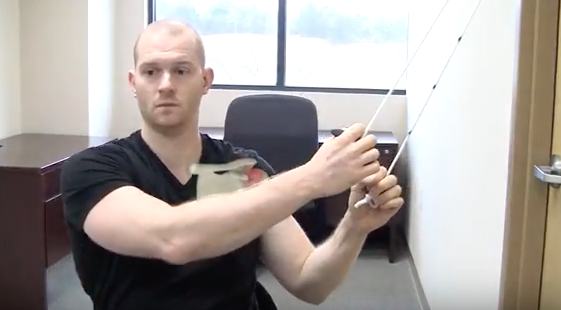
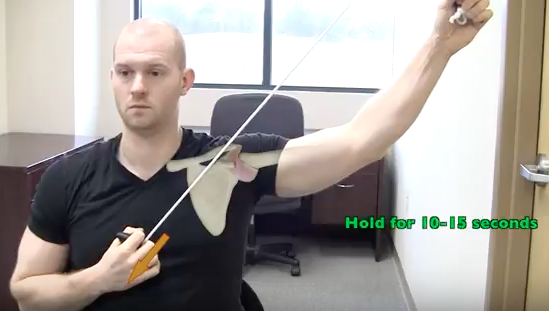
As your range of motion improves, you will be able to stretch higher. Once the shoulder range of motion has improved, turn the chair away from the door. Begin passive range of motion directly in front of you. This is the advanced way to improve the shoulder's Flexion range of motion.
Flexion
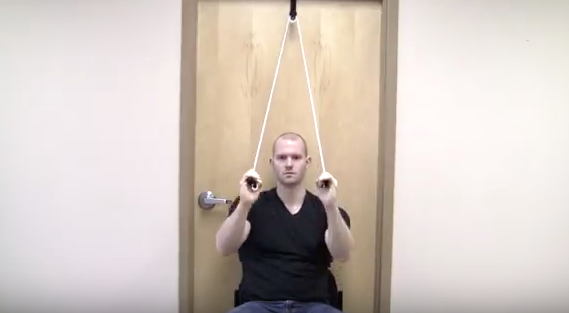
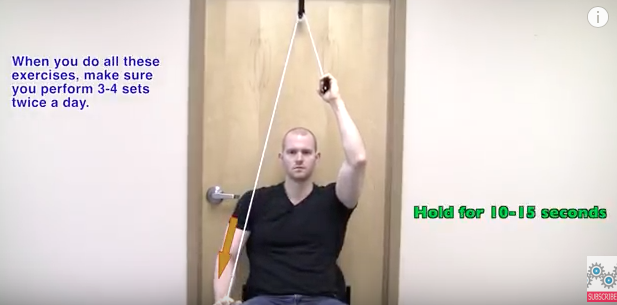
Next move the shoulder 45 degrees to the side and continue to lift passively. This is working on a motion known as Scaption.
Scaption
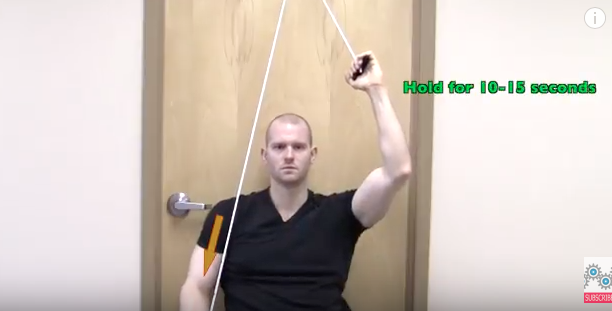
Then move the shoulder completely to the side to 90 degrees and continue to lift passively. This is the advanced way to improve the shoulder's Abduction range of motion.
Abduction
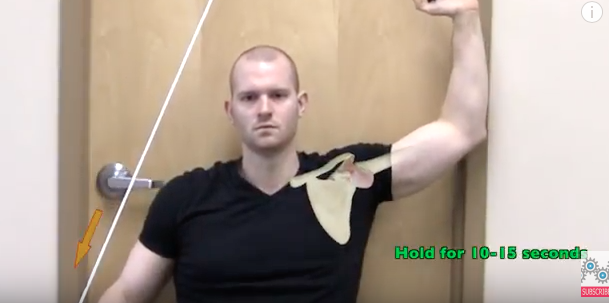
Rotational exercises are best done standing, first with the affected shoulder behind your back. This is helping Internal Rotation.
Internal Rotation
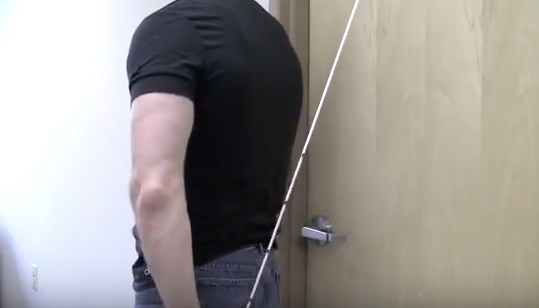
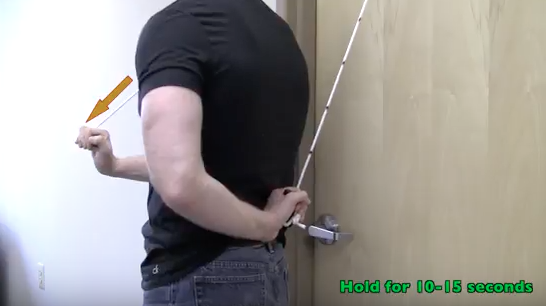
Finally, to improve External Rotation rotate out like you are hitch-hiking.
External Rotation
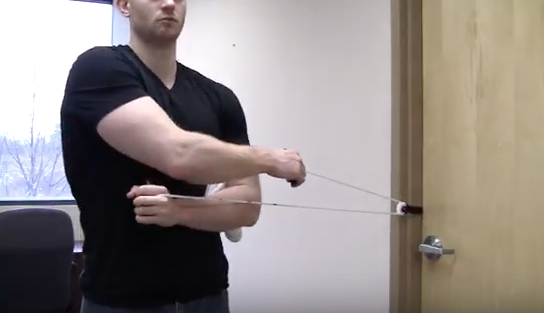
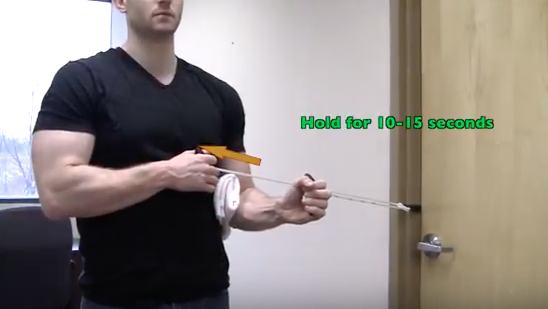
References
American Academy of Orthopaedic Surgeons. 2018. Frozen Shoulder. [ONLINE] Available at: https://orthoinfo.aaos.org/en/diseases--conditions/frozen-shoulder. [Accessed 9 March 2018].
